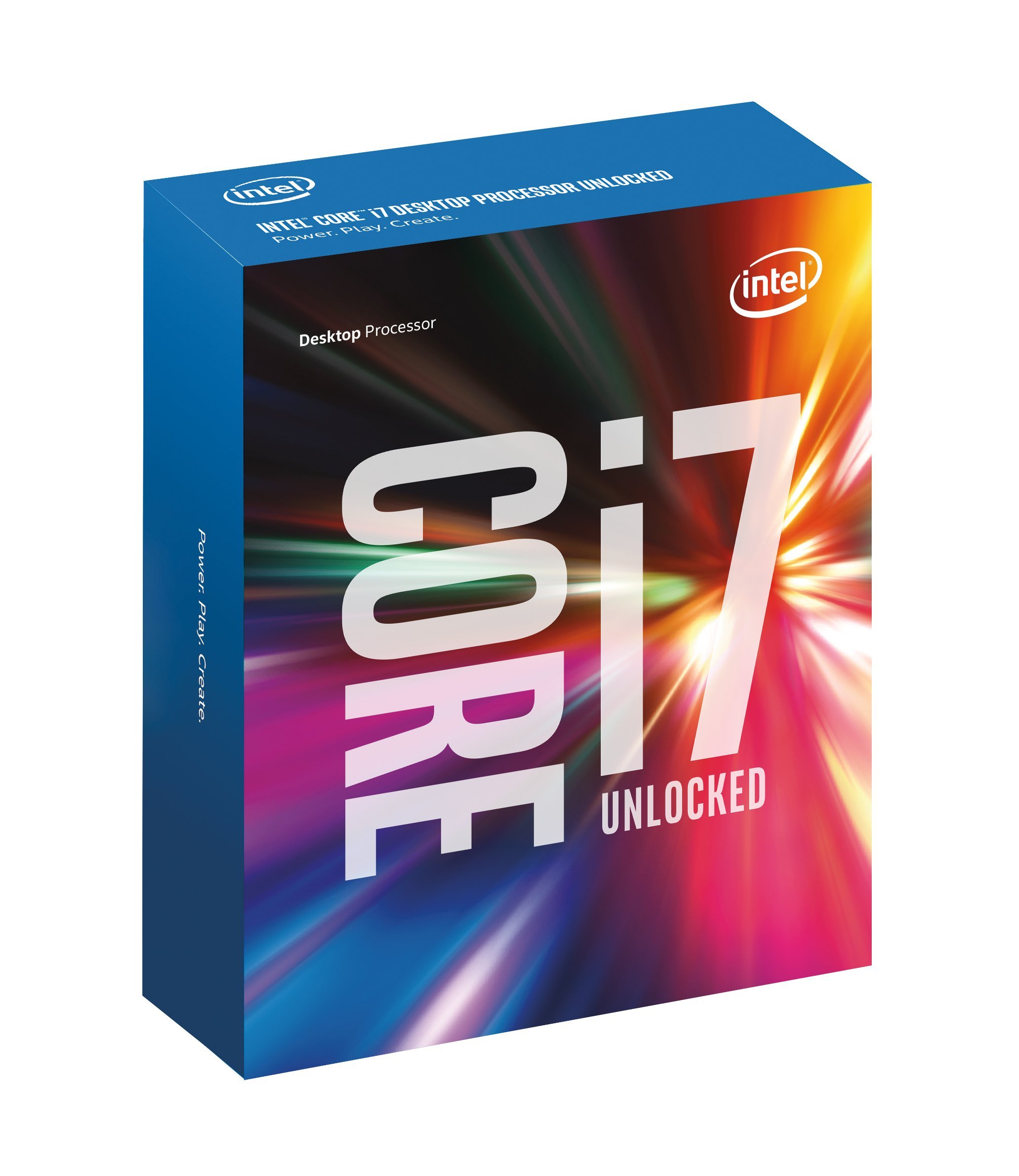
Product features
- Intel Turbo Boost 2.0 Technology
- Intel Hyper-Threading Technology1
- VMCS shadowing allows a Virtual Machine Manager (VMM) running in a guest
- Intel Ready Mode Technology1
- Intel Identity ProtectionTechnology1
Description
Product Description Take control with the 6th Generation Intel Core processors codenamed "Skylake-S". The i7 6700K is the flagship processor of the Skylake-S line-up that features exceptional performance that is increased by upto 22% and offers 6x faster storage bandwidth for quicker media access, all this means for an all-round more responsive PC. The 'K' prefix shows that this CPU is Unlocked and has overclocking enabled this is great news for extreme gamers and enthusiasts. he Intel Core i7 6700K boasts a 4.0 GHz base frequency and 4.2 GHz turbo frequency, the processor is also built on a 14 nm process, with a 95 W maximum TDP. The chip is a Quad-Core design with 8 threads. Integrated into the processor is Intel HD Graphics 530 which delivers mainstream-level graphics with discrete-level performance and has full support for DirectX 12 API. Intel's 6700K is fully unlocked allowing you to tune performance and obtain higher frequencies when used with Intel 100 series chipsets. Previous generation Intel processors such as the Intel Core i7-4790K processor used DDR3 memory, typically running at 1600 or 2133MHz. The Core i7 6700K have an enhanced memory controller that supports DDR4 memory, giving you a very healthy performance boost over DDR3. Intel Core i7 is a brand name applies to several families of desktop and laptops, The Core i7 brand targets the business and high-end consumer markets for both desktop and laptop computers, and is distinguished from the enty-level Core i3 and the more mainstream Core i5. Box Contains BX80662I76700K Processor
Intel Core i7-6700K Processor Review
Overview The Intel Core i7-6700K is a high-end quad-core desktop processor based on the Skylake architecture, announced in August 2015. It is manufactured in a 14 nm process and runs at 4.0 GHz up to 4.2 GHz, with the ability to execute up to 8 threads simultaneously thanks to Hyperthreading. This "K"-model has a free multiplier, making it easily overclockable.
Performance Despite having a slightly lower clock speed than its predecessor, the Intel Core i7-4790K (4.0 GHz - 4.4 GHz), the i7-6700K offers slightly better performance. The per-MHz performance increase is roughly 5-10% compared to the Haswell predecessor. This makes it capable of handling even the most demanding applications and games without issues.
Pros
- High Performance: The i7-6700K is well-suited for demanding applications and games, offering a slight performance boost over its predecessor despite the lower clock speed.
- Overclocking Capabilities: As a "K"-model, it has a free multiplier, allowing users to easily overclock the CPU for further performance gains.
- Hyperthreading: The ability to execute up to 8 threads simultaneously enhances multitasking and improves overall system efficiency.
- Integrated Graphics: The Intel HD Graphics 530, with 24 Execution Units (EUs), provides a 25% performance increase over the HD Graphics 4600 in Haswell, although it is still considered low-end and suitable only for basic graphics tasks.
Cons
- Age: The i7-6700K is an older processor, released in 2015, which makes it less competitive with newer CPUs in terms of raw performance and power efficiency.
- Power Consumption: With a typical TDP of 95 W, it consumes more power compared to newer CPUs, which can be a concern for those looking to minimize energy costs.
- Integrated Graphics Limitations: While the integrated graphics are an improvement over previous generations, they are still not capable of handling modern games at high settings.
Verdict
The Intel Core i7-6700K remains a solid choice for those who need a high-performance CPU for demanding tasks, especially if overclocking is a priority. However, its age and higher power consumption make it less ideal for those seeking the latest and most efficient technology.
Features
| Feature | Description |
|---|---|
| Clock Speed | 4.0 GHz up to 4.2 GHz |
| Cores | 4 Cores |
| Threads | 8 Threads (Hyperthreading) |
| Cache | 8 MB L3 Cache, 4 x 32 KB L1 Instruction Cache, 4 x 32 KB L1 Data Cache, 4 x 256 KB L2 Cache |
| TDP | 95 W |
| Socket | LGA1151 |
| Integrated Graphics | Intel HD Graphics 530 with 24 EUs |
| Memory Support | Max. Memory Size: 64 GB (DDR4-1866/2133, DDR3L-1333/1600 @ 1.35V) |
| Overclocking | Free multiplier for easy overclocking |
| Release Date | August 2015 |
| Manufacturing Process | 14 nm |
| Turbo Speed | 4.2 GHz |
| Typical Usage | High-end desktop applications, gaming (with limitations) |
